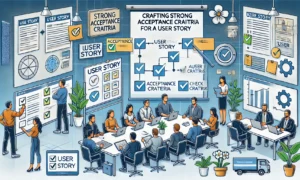In today’s competitive business landscape, companies are constantly looking for new ways to drive growth. One of the most powerful strategies gaining traction is Product-Led Growth (PLG). Unlike traditional sales-led or marketing-driven strategies, PLG places the product itself at the center of customer acquisition, engagement, and retention. But what does that mean for your business?
What is Product-Led Growth?
Product-Led Growth is a strategy where the product drives user acquisition, expansion, and retention. In simpler terms, PLG is all about creating a product so compelling that customers can’t help but use it, share it, and recommend it—all without relying heavily on traditional sales or marketing tactics.
Companies using PLG often offer freemium models, easy-to-navigate onboarding processes, and self-service tools that empower users to experience the product’s value quickly. Instead of relying on a lengthy sales pitch, the product essentially “sells itself” by showcasing its usefulness and benefits through real-time use.
Why PLG is Gaining Traction?
The success of PLG companies like Slack, Dropbox, and Calendly has revolutionized the way we think about product development. These companies have one thing in common: their products are designed to be intuitive, easy to use, and shareable. The result? User growth that is both organic and scalable.
Here are a few key reasons why PLG is the strategy of choice for many modern businesses:
- Lower Customer Acquisition Costs: By using the product to attract users, businesses can reduce their reliance on expensive ad campaigns and sales teams.
- Faster Time-to-Value: PLG strategies ensure that users experience value quickly, usually through a freemium model or trial period.
- Better Retention: When users are actively engaged with a product they find valuable, they are more likely to stick around and continue paying.
- Viral Growth: Products that are easy to use and share generate organic growth as users recommend them to others.
Key Metrics to Track in a Product-Led Growth Strategy
Measuring success in PLG goes beyond just tracking sales numbers. Here are the essential metrics businesses should focus on:
- Customer Acquisition Cost (CAC): The cost of acquiring a new customer.
- Time-to-Value (TTV): How quickly a user realizes the product’s value after signing up.
- Product Usage: Understanding how often and deeply users interact with the product.
- Retention Rate: How many customers continue to use the product over time.
Examples of Product-Led Growth Companies
Some of the most successful companies today are leveraging PLG to expand their user base without aggressive marketing campaigns or large sales teams. Slack, for instance, offers a free version of its product that allows teams to collaborate and communicate. This free version serves as a powerful acquisition tool, with users upgrading to paid versions as they experience its value.
Similarly, Dropbox started with a freemium model that allowed users to store files for free, with the option to upgrade for additional storage. This approach has been key to their growth strategy, as it reduces friction for users while also showcasing the product’s value.
How to Implement Product-Led Growth in Your Business
If you’re considering adopting PLG for your business, here are a few steps to get started:
- Create an Intuitive Product: Ensure that your product offers immediate value and is easy to use from day one.
- Offer a Self-Service Model: Allow users to engage with the product and explore its features independently.
- Implement a Freemium or Trial Model: Give users a taste of your product without requiring them to commit upfront.
- Track User Behavior: Use analytics to understand how users interact with your product and refine the experience based on real data.
Conclusion: The Future of Growth
Product-Led Growth isn’t just a passing trend—it’s a new way of thinking about business growth. As more companies shift from traditional sales tactics to PLG, the importance of product design, customer experience, and self-service will only continue to grow. If you’re looking to scale your business in 2024 and beyond, adopting a PLG strategy could be the key to sustainable, long-term success.
For more insights into PLG and how to implement it for your business, check out some helpful resources and guides from experts here and here.



